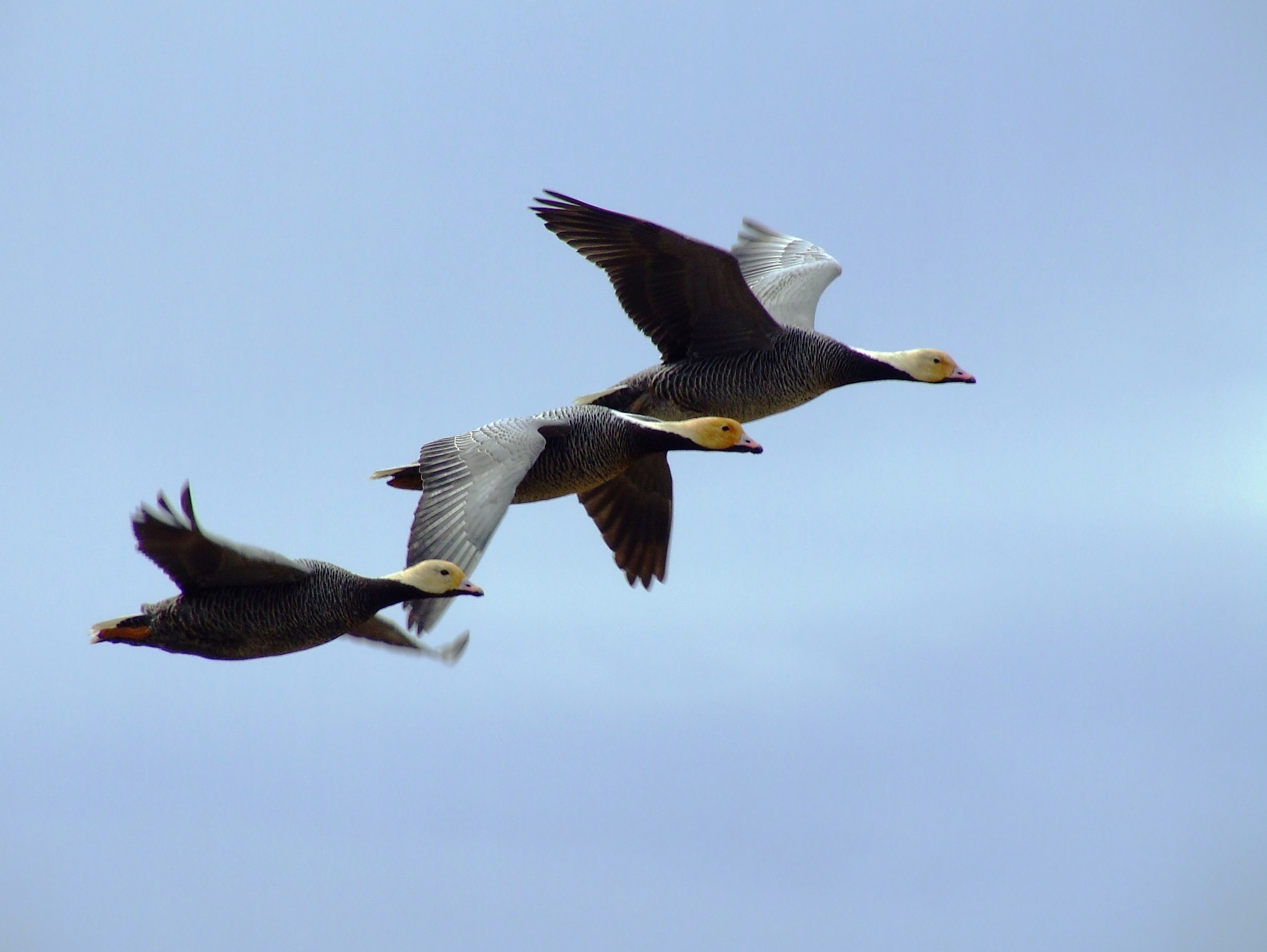First chance in 30 years: Emperor geese are in season again
BETHEL — For the first time in 30 years, rural Alaska hunters have been able to take aim at the emperor goose, a striking migratory bird that has been rebounding in number.
This fall, recreational hunters will get a chance as well, but for them the hunt will be sharply limited to one bird each.
Recreational hunts for emperor geese have been closed since 1986 and subsistence hunts since 1987, giving time to reverse a dramatic decline in population. A precise count of this stout, gray bird is elusive. Surveys show the population has at least doubled from its low point in the early 1980s and likely tops 100,000, said Julian Fischer, a supervisory wildlife biologist with the U.S. Fish and Wildlife Service.
Over the decades, the numbers have seen a slow, steady increase that supports the decision to allow hunts, he said. Statistical models suggest the geese could number 150,000 to 170,000, said state waterfowl coordinator Jason Schamber.

The world’s emperor geese almost all live solely in Alaska. In winter, they spread out across the Aleutian chain. Most breed on the Yukon-Kuskokwim Delta along a band within 10 miles of the coast from the Kuskokwim River to the Yukon River.
The long-awaited spring and summer subsistence hunt of emperor geese started April 2 and ends Aug. 31, with closures during primary nesting periods.
Subsistence hunters have no limit on emperor geese and no requirement to report their result, though a biologist checked in with rural village residents to see how things went. Initial reports were that there wasn’t as much subsistence hunting as expected because of weather and the timing of breakup, Fischer said.
Rural hunters focused on the early spring hunt for a taste of fresh meat after winter, said Steven Stone of the coastal village of Hooper Bay.

They were glad for the chance to hunt emperors after so many years of closure and sacrifice, he said. He didn’t hunt them much but caught a few.
“I’m really happy because they are one of the best we can have in the first part of springtime when they are coming in,” Stone said. They are fat, and the meat is tender. Usually his wife boils them for soup. Sometimes they roast a goose.
These geese, unused to hunters, don’t scare easily, he said. Hunters could walk up within maybe 50 feet. A notable number were seen, he said, more than he remembers.
“Right now the emperors are plentiful around our area. The young ones just got out. We can see them all over,” Stone said earlier this month.

On Sept. 1, the general fall hunt begins with a harvest capped at 1,000 birds statewide across seven hunting areas. Licensed Alaska resident hunters can participate. They will need a registration permit, which is free and available online at hunt.alaska.gov or at licensed vendors. Sport hunters also need federal and state waterfowl stamps. If they get a bird, they must report it within 24 or 72 hours depending on the hunt area, so managers can track whether the hunt is nearing that 1,000-bird cap.
The state Department of Fish and Game will manage the hunt.
It’s not clear what caused the decline decades ago, Schamber said. Maybe too many were hunted. Maybe disease wiped out large numbers. There could have been changes in habitat that affected food supplies.
“It’s primarily unknown,” he said.
The birds have a distinctive white head, more white along the back of the neck, bluish-gray wings and body, orange legs and a pink bill.
In 2015, the Alaska Migratory Bird Co-Management Council recommended a hunt be allowed once the population reached a certain threshold. The council — made up of Alaska Native, state and federal representatives — wrote a management plan for hunting emperor geese, the first such plan of its kind for migratory birds in Alaska.
The trigger for allowing the hunt was a spring survey count of 80,000 birds, averaged over three years. That threshold was reached in 2015 when a healthy count of 90,000 birds brought the average up, Fischer said. But the next spring, the number dropped almost 20 percent.
The method of surveying the birds then changed. The old way was an aerial count along the Alaska Peninsula in spring, when the birds are still migrating. Now the aerial count is being done in June, when the birds are settled in on their nests on the Yukon-Kuskokwim Delta. A smaller portion of the population is being counted but biologists believe they will get a more precise number that can be better compared year to year and used to determine the overall population, Fischer said.
The new system includes a population objective of 34,000 emperor geese on the Yukon-Kuskokwim Delta breeding grounds each June. If the number drops below 28,000 birds, some limits on hunting will be considered, under the management plan. If the number dips below 23,000, the hunt may be closed altogether.
This June, 30,087 emperor geese were counted on the Yukon-Kuskokwim Delta, still enough to allow the hunt, Fischer said.
The next count will be made in June 2018.